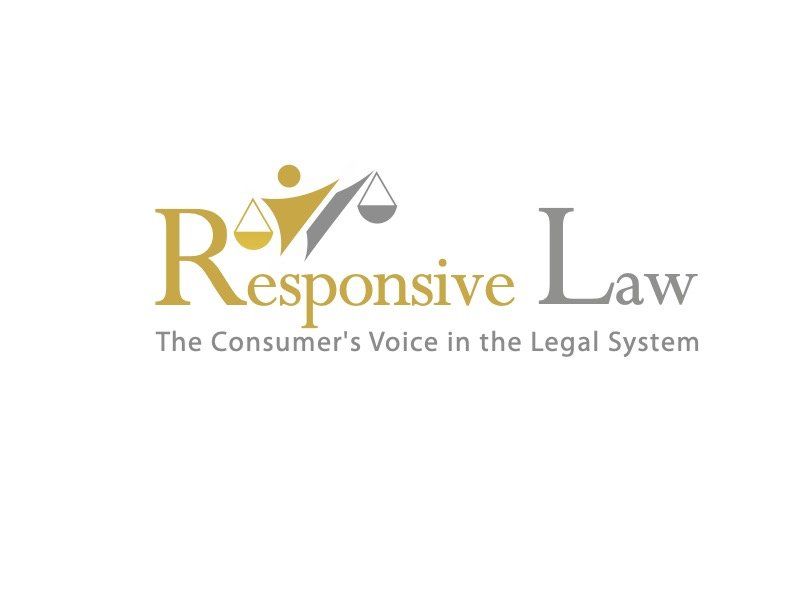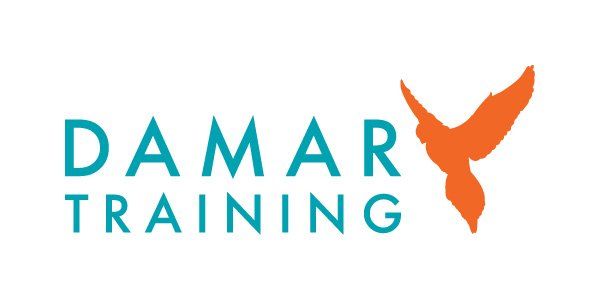Susskind & Eisenberg - are they right?
Crispin Passmore • July 13, 2021
Law firms, alternative providers, scale and vertical integration
Richard Susskind and Neville Eisenberg recently published a joint paper
on vertically integrated legal services in Harvard Law School’s Centre for Legal Practice’s online journal, The Practice. Given Professor Susskind’s
track record of writing, and Neville Eisenberg’s leadership of Berwin Leighton Paisner, including the set up and sale of Lawyers on Demand
and then establishing BCLP’s Cubed,
it won’t surprise readers that the paper is packed full of analysis, ideas and thought leadership.
They summarise the paper thus (and I repeat in full so as not to miss key points):
“Most current analysis of the legal market assumes that legal work can be carved up horizontally, with more complex tasks being handled by traditional law firms and less complex activities by alternative legal suppliers deploying process and technology.The assumptions underlying this analysis need to be reconsidered.Disaggregation of legal work, while producing many benefits, has not driven a degree of innovation in law firms and alternative providers that delivers clients the outcomes they want—not least, significant cost reduction and improved risk management.Instead, if legal expertise and experience are recognized as central to all legal service, this leads to a vertical view of legal work—wherein legal tasks of all types require a mix of legal expertise, process, and technology. Adopting this view of legal work will require a much greater commitment to knowledge management, more extensive use of AI systems, and the need for online legal products. Lawyers will also become guided in their work, not only by their legal experience, but also by greater business understanding as revealed by advanced analysis of client and market data.Change will evolve over time, rather than suddenly. The current disconnect between the demand and supply side in legal services will gradually reduce as a growing number of law firms and alternative legal suppliers offer their clients vertically integrated services and products.When clients take up services that combine the efficiencies of process and technology, with the assurance of legal expertise, new competitive opportunities will emerge for both law firms and alternative suppliers.For those at the vanguard of change, valuable related opportunities beckon—for the development of deeper and broader client relationships.”
The paper really should be read in full. It suggests that alternative providers have not reached scale, that they make up only 1.5% of the legal market and that lawyers have a role throughout the value chain because work cannot be sliced horizontally as easily as expected. They suggest therefore that law firms are well placed to win the competitive battle because clients want a single supplier. They are clear that law firms should not be complacent – rather they need to invest in not just lawyers but also process engineering, playbooks, templates, technology, knowledge management. In short they need to add what alternative providers are good at to their law firm.
What about alternative providers themselves? Susskind and Eisenberg argue that:
“If it is accepted that legal expertise and, therefore, lawyers are needed for all legal jobs, the challenge for alternative legal providers becomes clear. Without lawyers or access to lawyers with appropriate knowledge and experience, their offering becomes of limited use—efficient process without sufficient legal assurance. The offering instead has to have vertical reach.One way of achieving this reach is for alternative providers to collaborate with law firms. However, if clients continue to be hesitant about this form of co-operative provision, then this model is hard to sell. Another answer might be for alternative providers to employ lawyers. However, in many jurisdictions, regulation prohibits legal businesses that are not law firms from delivering legal services.”
I don’t disagree with a lot of their analysis and argument. But I do want to add to it.
In his response
Alex Hamilton of Radiant Law
says that three things stop law firms doing what Susskind and Eisenberg prescribe:
1- Traditional lawyers at law firms literally have no clue how to make everyday contracting (Radiant’s speciality) go fast2- Traditional law firms are structured for the bespoke and are in no rush to do anything.3- Traditional law firms aren’t optimised for cooperation, they are optimised for autonomy of partners.
It is hard to argue with this. Eisenberg’s track record shows just how much can be achieved within a traditional law firm, but the reality that a traditional law firm partnership did not (could not or would not?) provide the investment for Lawyers on Demand to scale, hence the sale to Bowmark Capital
in 2019. No point in being right with their analysis if law firms simply won’t commit to the investment needed – financially or culturally.
What of the scale question? I read the paper in the same week that Legal Zoom’s IPO launched
on NASDAQ, raising them over $500m, rising rapidly to an enterprise value of around $7bn. Earlier this year Rocket Lawyer
raised $223m. And we have seen Axiom
raised significant investment when it eschewed an IPO under an offer from Permira
(who had previously invested in Legal Zoom).
Elevate
took a $25m investment
from Kayne Partners following a $25m facility from Morgan Stanley that financed several acquisitions, and has made it known that it seeks to become a public company in future.
We can also look at the Big Four in the UK and across the world. At least one of the Big Four is in the top 100 law firms in the UK, and probably the top 50 and that doesn’t touch their global legal revenue. But what is important in that equation is that this calculation usually only considers their regulated legal services revenue. And, of course, they have the advantage of being able to only put a small proportion of their legal work through a regulated law firm in the UK. Even post Legal Services Act 2007, it was only from 2014 that the Big Four (and other professional services firms) were able to create genuine multi-disciplinary practices as opposed to owning a separate law firm. This gets technical but readers need to understand the way the SRA regulates MDPs
to recognise that the vast majority of their legal revenue is not recorded as legal service turnover by the regulator. It is tax advice, consultancy service, outsourcing, advisory, managed legal service and more.
What even counts as the legal services market? That Legal Zoom can generate so much investment, or that Rocket Lawyer can have something like 25 million customers, without practicing law in the US suggests that definitions can obscure reality. Attempts by the Legal Services Board to even quantify the huge unregulated legal market have floundered but they made some findings. There is at least a danger that lawyer commentators see the issues through the lens of law firms, missing the hinterland. The regulatory restrictions that Susskind and Eisenberg note mean that the business of law gets categorised outside of the legal market, thus depressing both the size of the market and the share that alternatives to lawyers hold. You can compete with law firms by providing better or cheaper services – within the market; but also by providing alternative solutions to that need – ie creating a new market. These innovations, combined with regulatory restrictions that require services not to be legal advice obscure the measurement of scale.
So while I don’t know what counts as scale, the alternative market looks pretty big to me. Alternative providers are around 20 years old and they are growing quickly despite regulatory headwinds. If this isn’t scale, or at least a clear path to scale, what is?
Even when I look at Amazon it is remarkable how, with hindsight, we see that their real scale came after 20 years (they started in 1994) – it is simply the maths of exponential growth. Elevate has grown from startup to almost $100m in 10 years, at something like 60% CAGR, so after 20 years, even if growth slows, Elevate will quickly become very significant.
None of this means that alternative providers are secretly dominant. But the 1.5% of the market misleads because alternative providers are not competing in all sectors – market definition is something that I will leave to economists, but it is easy to be misdirected by numbers. That all of these businesses are growing and reaching some sort of scale suggest that there are at least some areas of the legal market (beyond e-discovery which is acknowledged by the authors as scaled) that can be sliced horizontally to at least some degree.
Furthermore, I know of several GCs that are asking alternative providers to do more – including reserved legal activities or the practice of law. Trust is earned on the lower value work and grows from there. And that is where regulatory restrictions kick in. The caution of corporate clients is well recognised but change is happening. Perhaps Legal Zoom and Rocket Lawyer are scaling fastest because they sell to the public rather than other lawyers - their customers are not knee-deep in lawyer exceptionalism.
Susskind and Eisenberg acknowledge the impact of regulatory restrictions. The unauthorised practice of law and the lawyer monopoly create a pretty impressive moat on first sight, especially when that moat’s size and shape is controlled by the lawyers and their professional bodies. But the history of guilds tells us that they are not quite as impregnable as they first appear. The City of London is full of halls that commemorate trades and professions that used to dominate; but we no longer know what some of them even were because new entrants found ways to bypass restrictions and legislators dismantled others. Once they faced competition many guild members were swallowed up by new models better able to meet customers changing needs.
Is that happening in law? While US State Bars debate regulatory reform – considering how deep and wide their moat should be – new entrants are simply building an alternative future. Witness all the firms that I have mentioned so far. What could Legal Zoom, Rocket Lawyer, Axiom, Elevate, the Big Four all achieve if they could practice law in the US?
England & Wales gives us a clue, but it is more nuanced than perhaps recognised. They have been able to become an ABS (or own one) only since 2012 (it took five years for the Legal Services Act to be implemented). But it was only at the end of 2019 that solicitors were allowed to practice for clients through an alternative provider even in England & Wales. Thus, it is only now that alternative providers in the most liberalised major legal market can start to break down hard boundaries between law and non-law.
Reforms to how solicitors qualify in England & Wales, with the first exams this November, mean that alternative providers can also train their own lawyers in a way that they haven’t been able to previously. This just adds the to the opportunity.
And in the US things are changing too. Not just the reforms that Utah and Arizona have implemented, that California and Florida are developing, and other States considering. What is really important in the US is that investors and founders are finding ways to bypass the unauthorised practice of law. It isn’t hard. There are multiple routes (with a good consultant
and a moderate risk appetite) to bypass the restrictions. That is not just on the margins but also direct into the mainstream of the practice of law. No need to go into the detail here but UPL is heading the way of guilds.
The point of all of this is that alternative providers are well placed to deliver the sorts of model that Susskind and Eisenberg highlight and they have the leadership, governance, investment and culture to do that. I think the authors are right about the need for lawyers throughout the vertical; but that is not the same as being in charge of either the firm or the process or the work. Hamilton is right that most law firms are just not set up for the sort of transformation that is suggested.
Some firms might be capable of making the leap. Eisenberg is clearly the key example with his track record. I would add Pinsent Mason
as another example. But the challenge for these firms is to ensure that partners are not the gateway; if law firms’ captured alternative provision are deployed only if partners choose to, then law firms will never reach the scale sought. Susskind and Eisenberg are clearly not saying that law firms need not worry about alternative providers, but it would not be surprising if many traditional lawyers might read their paper as making their own survival and success inevitable. I think the authors are actually mapping a revolution led by law firms rather than the demise of alternative providers. At its core the paper is making the case for a convergence between alternative and traditional models and that seems inevitable as regulatory restrictions unwind in the coming decade.
What timescale then for the revolution? Well, the industrial revolution took something like 50 years so it would be wrong to measure these sorts of changes in too short a timeframe. Regular readers will know I like a quote from a passage in Ernest Hemingway’s novel The Sun Also Rises in which a character is asked how he went bankrupt. “Two ways,” he answers. “Gradually, then suddenly.”
Change is already happening gradually and complacency about alternative providers makes the suddenly more likely, quicker.

The Legal Tech Fund ran the best event for innovators int he legal market that I have found. TLTF 2023 was a a great opportunity to learn new things but best of all were the connections made and friends seen. These enabled new discussions and deeper debates about technology, capital deployment and liberalisation. TLTF 2024 is just one year away - I'm already excited.










